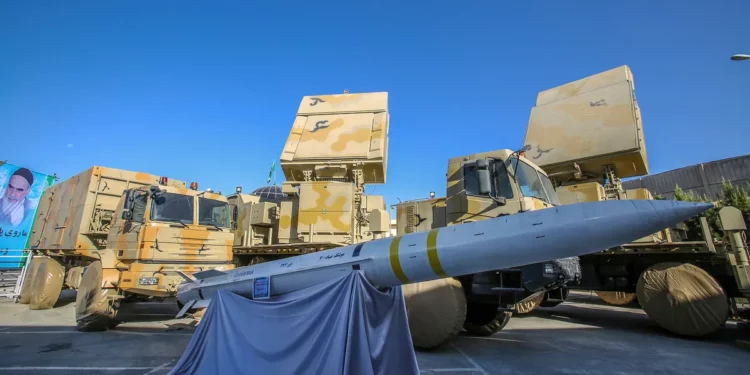According to a report released on Tuesday by a weapons research group, the Iranian drones that Russia has used to attack military targets and civilians in Ukraine are mostly made of parts made by companies with headquarters in the United States, Europe, or Asia. (Iranian Weapons used )
According to the report, most of the parts that the researchers looked at, like semiconductors and other advanced electronic components, had markings that showed they were made in recent years while Iran was under sanctions meant to stop it from having such things. As recently as May, one guided missile that could be fired by drones appeared to have been produced. It is not clear how the parts got to Iran. The company that sold the component is typically identified by the markings on the component, but not always by the year or manufacturing location.
Since Russia invaded Ukraine in February, Iran has denied providing Russia with military equipment, but the group’s findings refute that claim.
Conflict Armament Research, a British-based independent organization that tracks and identifies wartime weapons and ammunition, published the report. At the invitation of the Ukrainian security service, a small group of its investigators went to Kyiv, the capital of Ukraine, at the beginning of November. (Iranian Weapons used )
In the war, Russia and Ukraine have used a variety of drones, including models made by China, Turkey, and the United States. While some are used for surveillance, larger versions can also carry missiles and grenades for use in ground attacks.
The remains of three advanced Iranian unmanned aerial vehicles, the Mohajer-6, an armed surveillance drone, and the Shahed-131 and Shahed-136, which are designed to crash into their target and explode upon impact, were examined by the Conflict Armament Research team.
Damien Spleeters, the group’s investigator, stated, “We saw more than 500 different components in three U.A.V. models.”Mr. Spleeters stated that the majority of the components that the team was able to identify by year of manufacture were produced in 2020 and 2021. We identified more than 70 manufacturers in 13 different countries, and approximately 82 percent of these components were made in the United States.
According to U.S. officials, the Iranian drones began arriving in Russia in August. According to Ukrainian soldiers, Russian troops have destroyed the country’s civilian infrastructure, such as electrical power stations, as well as howitzers supplied by the United States.
After Russian troops used those weapons to attack civilians, the Biden administration announced new sanctions in September against the Iranian company that makes the Shahed drones. In October, the same company was sanctioned by Britain and the European Union.
Mr. Spleeters stated that the fact that so many components in these weapons came from the United States and the European Union despite various sanctions against Iran shows how ineffective such actions have been.
He stated, “Very frequently when I speak with regulators, the discussion goes to how difficult it is to regulate those things because they are everywhere.” However, some of the items we discovered are quite expensive.
The group discovered a large number of common and inexpensive chips used in Iranian weapons in addition to advanced semiconductors.
Chris Miller, a professor of international history at Tufts University and the author of the book “Chip War,” which chronicles the development and proliferation of semiconductors, stated, “Many of the chips that end up in military systems like drones also have widespread consumer uses.” This indicates that they can be purchased for civilian or consumer use in many nations, and as a result, distributors and end users have no close control over their destinations. (Iranian Weapons used )
He continued: Therefore, although it would undoubtedly be against the law for a company based in the United States to transfer chips directly to Iran for use in this manner, it is relatively simple for those chips to be transferred to a third nation, and then for someone in the third nation to transfer them to Iran, for instance.
According to Mr. Miller, the small size, low price, and tendency to be produced in batches of tens of thousands make it simple to divert hundreds or thousands of such chips to a nation like Iran.
Gas-burning motors spin a propeller at their rear on both triangular Shahed drones. Mr. Spleeters stated that the ones examined in Ukraine had been repainted gray and were marked with the Russian word for geranium.
Because the drones had either been shot down or had malfunctioned and were not completely intact, it was difficult to estimate their dimensions.
The Mohajer-6, on the other hand, is a much bigger, reusable drone that is about the size of a small ultralight propeller plane. It can be used for both airstrikes and surveillance, and its estimated range is around 125 miles.
Additionally, the investigators had rare access to an Iranian Qaem-5, a small precision-guided Mohajer weapon. The Qaem-5 is slightly smaller than the Hellfire missile that is typically launched by armed American drones. It measures just over four feet in length.
According to the investigators, a small television camera in the missile’s nose suggests that the weapon is being guided remotely.
According to the group, its analysis of Iranian drones that have been observed in the Middle East since 2017 demonstrates that the weapons are becoming increasingly sophisticated and capable. (Iranian Weapons used )
The Shahed drones’ electronic components indicated that the weapons could accurately fly to their targets and contained satellite navigation modules that would enable them to operate in areas where satellite navigation signals were jammed.
Mr. Spleeters stated, “It appears there’s a big jump in capabilities for the single-use drones.” They have been able to improve the export weapons’ capabilities and resilience.











